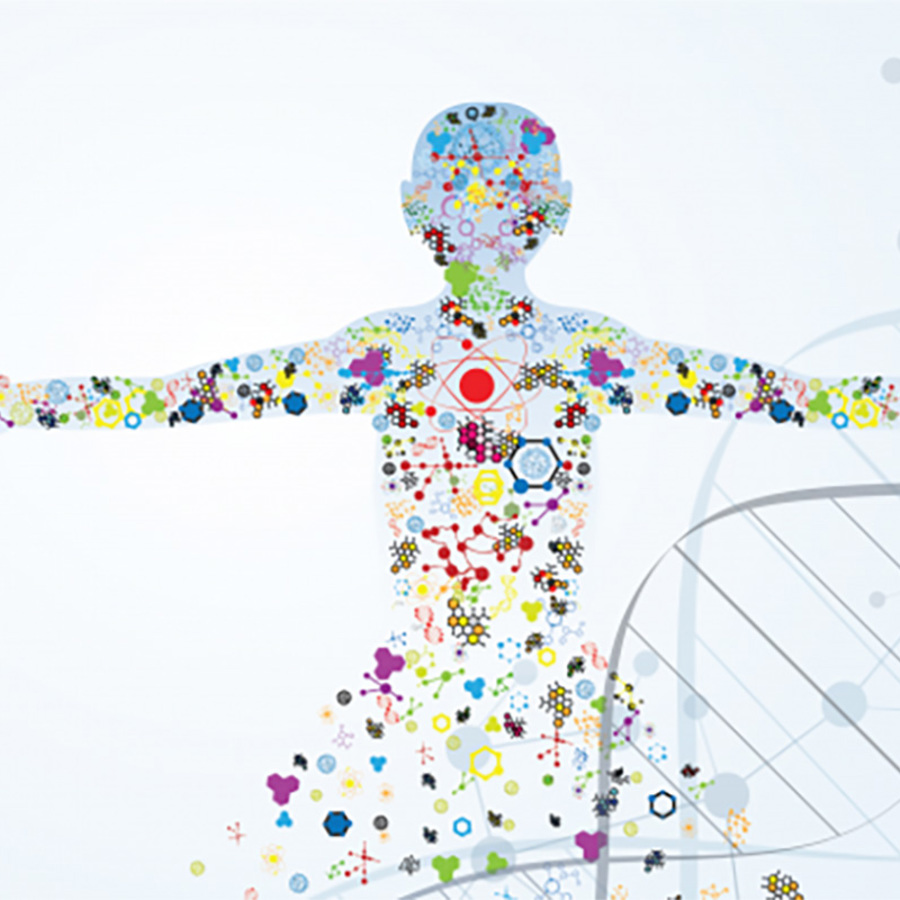
Does a mutation that occurs in a muscle cell in one part of the body also occur in another?
January 10, 2017

A curious adult from Missouri asks:
“If a mutation in a muscle cell in right little finger occurs, does that same mutation occur in the left big toe muscles? If so, when and how?”
No it doesn’t. A change (or mutation) in the DNA of a muscle cell can’t be transferred to another muscle cell. Each cell has its own set of DNA.
The only way a mutation like this can spread (at least in people) is if it happens in a cell that makes copies of itself. Or if the mutation turns the cell into one that makes copies of itself.
Otherwise that lonely muscle cell in your finger will have a mutation that the rest of the cells in your body do not.
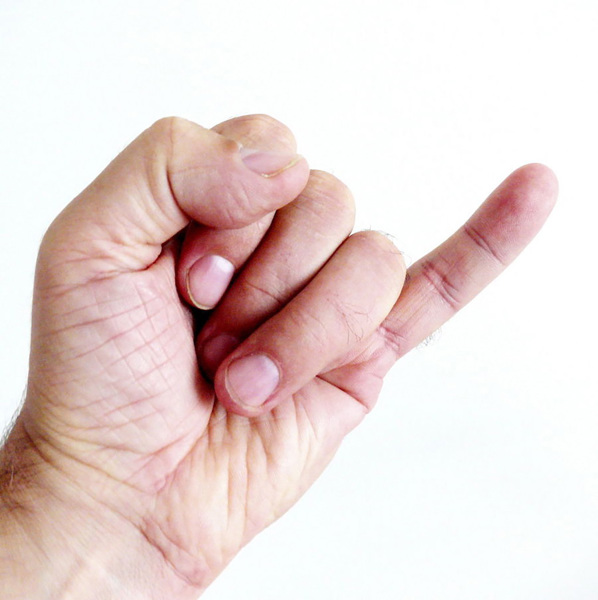
From One, Many
Most cells in our bodies have to be fully grown to be able to do their job. For the most part, these mature cells can’t make new ones.
This is true for the kinds of muscle cells in our fingers and toes. They can grow bigger, but they can’t divide into more cells.
On the other hand, skin cells divide and grow very quickly. Skin cells grow big, and then split into two cells.
This process is called mitosis. After one skin cell becomes two through mitosis, one cell moves out to join the sturdy layer of skin which protects our body. This cell will not have mitosis again, it is like the muscle cell now. The other cell remains and does mitosis again.
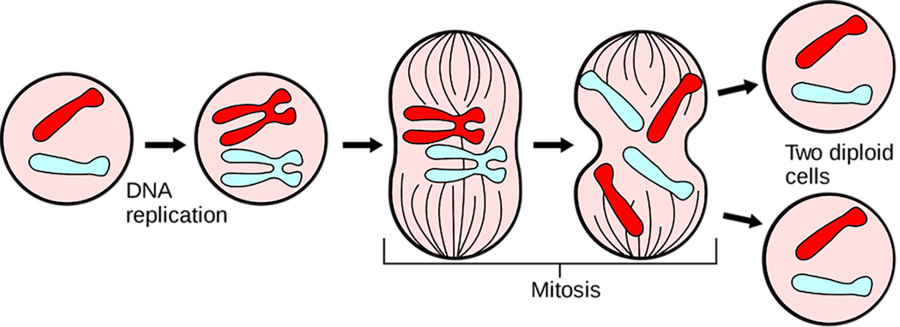
Imagine that before the skin cell divides, it gets a mutation in its DNA. Now all the cells that come from this cell dividing will have the mutation. The one original mutation now spreads out into the skin.
Eventually, several skin cells on your outer skin will have that mutation. The cells with the mutation will be very close to one another in a small spot.
But there are ways a single mutation can spread to a larger number of cells in different places.
Early Mutations Can Spread
When a human being is first made, it is just a single cell! This single cell eventually divides over and over to become an adult with trillions of cells. These early cells are called stem cells.
During the early parts of human development, stem cells are very important. This is because just one of these stem cells will end up being many different kinds of cells in an adult.
For example, imagine half the skin cells in an adult came from a single stem cell. If an early mutation happened to this single cell, then half of the adult’s skin cells would all carry the mutation. The other half would not.
When a large fraction of someone’s cells have different DNA, it is called genetic mosaicism. It gets its name because the DNA isn’t the same for every cell in the body, like how tiles have different colors in mosaic art.
Because most mutations are harmless, mosaicism isn’t usually a big deal in terms of health. It is a different story for the next way a mutation can spread — cancer.
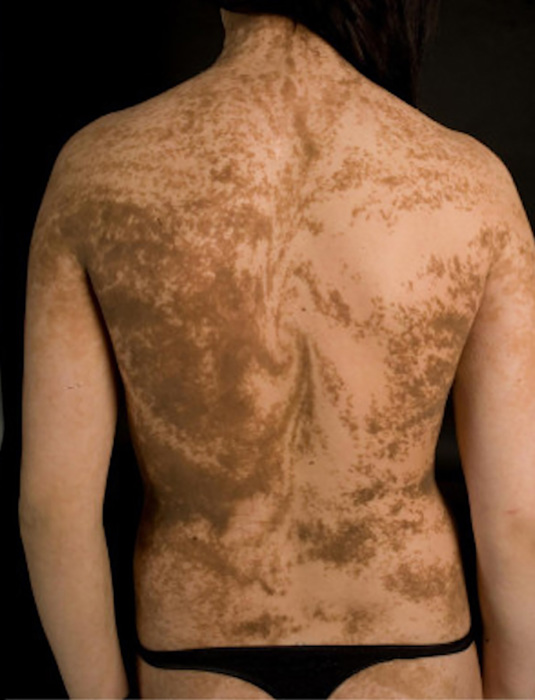
Cancers Happen Because of Mutations
Some of the DNA in our cells tell them when to grow and stop growing. If this DNA gets mutated, a cell can forget how to stop growing.
When this happens, the mutated cell keeps growing and dividing through mitosis. These new cells have the same mutation, so they too, keep growing.
Often, our bodies’ other cells cannot stop these damaged cells from growing out of control. This is what happens during cancer.
Cancerous cells can spread very far in the body. Often they keep building up until a few then enter the bloodstream.
Once in the bloodstream, these cells can travel far away and start growing somewhere else. Through this process of metastasis, a cancer starting at a finger can cause cancerous cells with the same mutation to start growing on a toe.
Those are three ways that a mutation can be spread throughout our bodies. None of them changes the DNA of an existing cell to copy that of another cell.
However, tiny single cell organisms such as bacteria can actually copy DNA from one another.
Bacterial Sex Swaps DNA
Large organisms like humans are made out of many kinds of cells. Like cogs in a machine, all of those cells have to work consistently the way they were designed.
Humans also have DNA wound up in complicated structures called chromosomes for organization. It would be hard for the cells in our bodies to change up their DNA.
Smaller organisms that are just one single cell, like bacteria, often share and exchange DNA. This is easy for them because they can organize their DNA in little rings called plasmids.
There are many ways bacteria do this. In one, the giving bacteria creates a small bridge to the receiving bacteria. Then the giving bacteria makes and sends over a copy of some of its DNA. This is called bacterial conjugation.
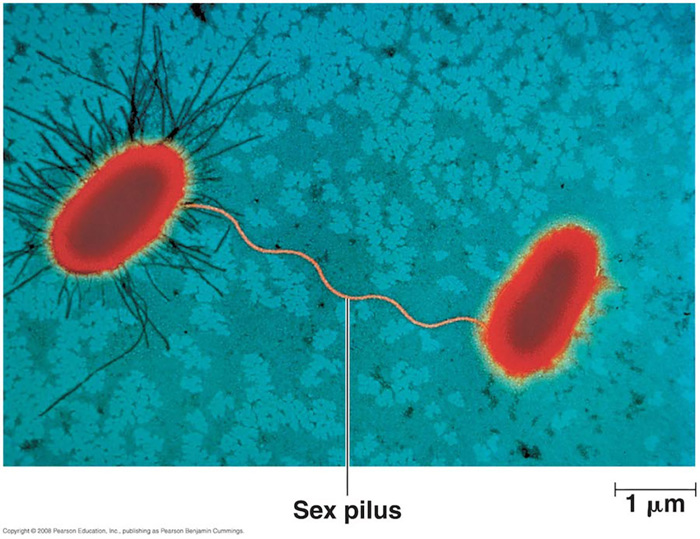
Bacteria constantly send genes over to one another. They can send over DNA that lets them grow larger, create new colors, or even become resistant to antibacterial soap!
So to conclude, there’s no way a sudden mutation in one cell can suddenly cause another cell to pick up the same mutation. However, bacteria can share and exchange their DNA. For us humans, there are a few ways that a mutation can spread through our body.

Author: Alex Han
When this answer was published in 2023, Christy was a Ph.D. candidate in the Department of Chemicals and System Biology, studying the mechanisms of random monoallelic expression in Howard Chang’s and Joanna Wysocka’s laboratories. Christy wrote this answer while participating in the Stanford at The Tech program.
 Skip Navigation
Skip Navigation
